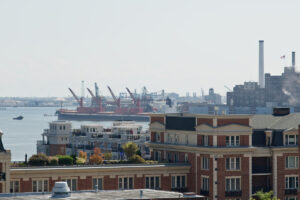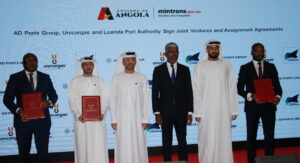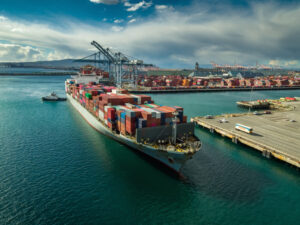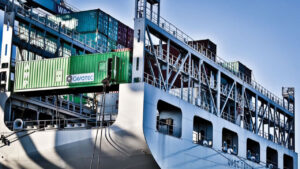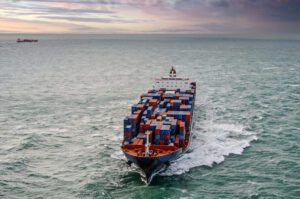What we thought might be the light at the end of the tunnel from a grief-stricken 2020 has only continued to roll through to this year and global supply chains continue to be jolted by pandemic-driven changes in operations.
However, hardship breeds innovation, and no more is this evident than in ports and maritime for 2021.
Disrupted supply chains
Arguably the most dominant news story of the year hit in March when the Suez Canal was clogged by the 20,000 TEU Ever Given vessel, exasperating cargo owners and causing weeks-long ripple effects for industry. In the future we could see increased attention on alternative routes through the area to reduce reliance on the major transport route.
The year of 2021 saw continued fears of Coronavirus flare-ups in manufacturing hubs and major ports: namely at the Port of Yantian, Ningbo-Zhoushan, and several areas around Southeast Asia. The emergence of the Omicron variant only continues to stoke concerns on future regional lockdowns, and shippers have been forced to be agile on cargo routes.
Winners on the year?
One particular winner from 2021 was the ocean carrier industry: increased demand, paired with the lack of container and vessel capacity, has driven profits skyward.

The surge in profits has caught the eye of federal regulation: in August the Federal Maritime Commission (FMC) launched an expedited study inquiring into the legal sufficiency of ocean carrier practices to implement surcharges.
Ports in the public eye
Of course, 2021 was not all doom and gloom! Not even close to it.
2021 has highlighted that ports and terminals are critical nodes in getting goods to where they need to go – and members of the supply chain are collaborating to futureproof its goods flows for the years ahead.

In the face of disruption we have seen a major spending drive from US Government: on 28 July, the Bipartisan Infrastructure Bill, a landmark legislative $17 billion commitment to the ports industry, was introduced and will seek to address long-term digital and infrastructural developments for the nation’s maritime sector.
“Our ports and waterways need repair and reimagination…Modern, resilient, and sustainable port, airport, and freight infrastructure will support US competitiveness by removing bottlenecks and expediting commerce, reducing the environmental impact on neighbouring communities,” the White House wrote in a statement.
Digital resilience
At PTI we wouldn’t be doing our job if we did not bring you the latest on digitalisation in the sector!
Progression on data communication standards has reached new heights in April when the Digital Container Shipping Association (DCSA) announced that the majority of its member carriers – including titans MSC and CMA CGM – adopted a Track and Trace standard APIs to provide a streamlined way for shippers to receive real-time, cross-carrier data regarding the whereabouts of their containers.
Elsewhere, TradeLens’ blockchain-based data-sharing platform has skyrocketed in usage this year: from major carriers including Hapag-Lloyd and Ocean Network Express (ONE), to rollouts in India, Pakistan, and China, emerging technologies harnessed through platforms like TradeLens will be vital in providing visibility for customers to be resilient in changes in cargo flows globally.
Ongoing climate focus
Throughout the humdrum of daily life in ports is the underlying collective need to reduce maritime’s carbon footprint.

Maritime industries carry 80% of the world’s global trade, making any shift away from fossil fuels a valuable step in global progress towards sustainability.
2021 saw, in January, ICTSI handle the world’s first carbon-neutral certified container shipment; and later in the year saw Maersk sign the contract for the world’s first carbon neutral methanol container vessel. Most recently, the Port of Duisburg in Germany will construct Europe’s first carbon neutral container terminal, setting the industry standard for a roadmap to net-zero carbon emissions for our sector.
2021 has been breakneck year with high highs and low lows – moving into 2022, previous challenges faced by those in the sector will be critical in shaping mindsets in ports and terminals for what lies ahead.
Top stories of the year
- What is a Smart Port?
- What is a Green Port?
- Yokohama tops table in new Global Container Port Performance Index
- No end to port congestion until Chinese Lunar New Year 2023, forecasts say
PTI would like to wish everyone that makes our work possible a very happy and successful 2022. We have a lot planned for the new year and can’t wait for you all to see what we have been working on.


